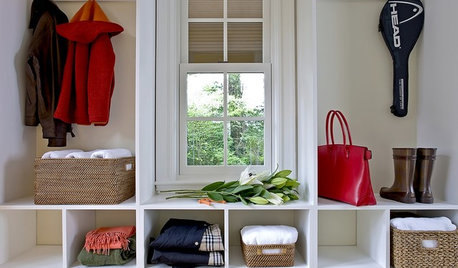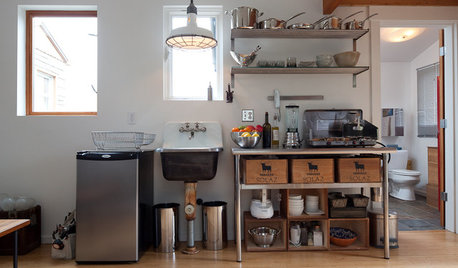Should this be going faster?
veronica_p8
13 years ago
Related Stories

DECORATING GUIDES7 Tips to Sell Your Home Faster to a Younger Buyer
Draw today's home buyers by appealing to their tastes, with these guidelines from an expert decorator
Full Story
SELLING YOUR HOUSEHelp for Selling Your Home Faster — and Maybe for More
Prep your home properly before you put it on the market. Learn what tasks are worth the money and the best pros for the jobs
Full Story
SELLING YOUR HOUSESave Money on Home Staging and Still Sell Faster
Spend only where it matters on home staging to keep money in your pocket and buyers lined up
Full Story
BEDROOMS5 Tips to Wake Up Faster and More Happily
Shine when you rise even if you're not a morning person with these strategies to banish the brain fuzz
Full Story
SELLING YOUR HOUSEYour Home-Selling Guide for a Faster and Better Sale
Learn staging and curb appeal tricks, how to get the best photos and more in this roundup focusing on high-impact house-selling strategies
Full Story
LIFE11 Ways to Get Out the Door Faster
Make the morning routine less of a hassle with some simple organizing and planning around the house
Full Story
REMODELING GUIDESShould You Stay or Should You Go for a Remodel? 10 Points to Ponder
Consider these renovation realities to help you decide whether to budget for temporary housing
Full Story
COLORExterior Color of the Week: Go Navy!
It’s daring and dramatic, but also a neutral. And it looks fantastic on almost any home
Full Story
WORKING WITH PROSGo Beyond the Basics When Interviewing Architects
Before you invest all that money and time, make sure you and your architect are well matched beyond the obvious levels
Full Story
GARDENING AND LANDSCAPINGPatio Pavers Go Green in Between
Kind to the environment and easy on the eyes, pavers with moss or other foliage in the joints create a charming permeable hardscape
Full StoryMore Discussions












equinoxequinox
happyhoosierworms
Related Professionals
Quincy Landscape Architects & Landscape Designers · Athens Landscape Contractors · Canby Landscape Contractors · Hoffman Estates Landscape Contractors · Middletown Landscape Contractors · Natick Landscape Contractors · Palm Beach Gardens Landscape Contractors · Thonotosassa Landscape Contractors · Claremont General Contractors · Coos Bay General Contractors · DeSoto General Contractors · Rolling Hills Estates General Contractors · Saginaw General Contractors · Torrington General Contractors · Austintown General Contractorssteamyb
lkittle
veronica_p8Original Author
veronica_p8Original Author
gardenfanatic2003